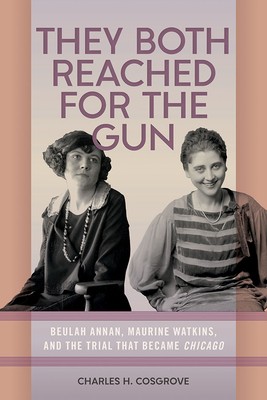
- We will send in 10–14 business days.
- Author: Charles H Cosgrove
- Publisher: Southern Illinois University Press
- ISBN-10: 0809339382
- ISBN-13: 9780809339389
- Format: 15.2 x 22.9 x 2 cm, minkšti viršeliai
- Language: English
- SAVE -10% with code: EXTRA
Reviews
Description
Examining the case that inspired a pop culture phenomenon
In 1924 Beulah Annan was arrested and incarcerated for killing her lover, Harry Kalsted. Six weeks later, a jury acquitted her of murder. Inspired by the sordid event, trial, and acquittal, Maurine Watkins, a reporter at the time, wrote the play Chicago, a Broadway hit that was adapted several times. Through a fresh retelling of the story of Annan and of Watkins's play, Charles H. Cosgrove provides the first critical examination of the criminal case, and an initial exploration of the era's social assumptions that made the message of the play so plausible in its own time. His careful historical research challenges the received portrait of Annan as a killer who got away with murder, and of Watkins as a savvy cub reporter and precocious playwright. In They Both Reached for the Gun, Charles H. Cosgrove expertly combines inquest and police records, and interviews with Annan's relatives, to analyze the participants, the trial, and the subsequent play. Although no one will ever know what really happened in the Kenwood apartment on Chicago's south side one hundred years ago, Cosgrove's interrogation shows how sensationalized Watkins's writing was. Her reporting on the Annan case perpetuated falsehoods about Annan's so-called "confession," and her play gave an inaccurate portrayal of Chicago's criminal justice system. Despite Watkins's insistence that her drama revealed the truth about its subjects without any exaggeration, her play depicted police, prosecutors, and judges as the only "good guys" in the story, ignoring those who lied, misled, and used brutal methods to obtain forced confessions.EXTRA 10 % discount with code: EXTRA
The promotion ends in 22d.17:57:03
The discount code is valid when purchasing from 10 €. Discounts do not stack.
- Author: Charles H Cosgrove
- Publisher: Southern Illinois University Press
- ISBN-10: 0809339382
- ISBN-13: 9780809339389
- Format: 15.2 x 22.9 x 2 cm, minkšti viršeliai
- Language: English English
Examining the case that inspired a pop culture phenomenon
In 1924 Beulah Annan was arrested and incarcerated for killing her lover, Harry Kalsted. Six weeks later, a jury acquitted her of murder. Inspired by the sordid event, trial, and acquittal, Maurine Watkins, a reporter at the time, wrote the play Chicago, a Broadway hit that was adapted several times. Through a fresh retelling of the story of Annan and of Watkins's play, Charles H. Cosgrove provides the first critical examination of the criminal case, and an initial exploration of the era's social assumptions that made the message of the play so plausible in its own time. His careful historical research challenges the received portrait of Annan as a killer who got away with murder, and of Watkins as a savvy cub reporter and precocious playwright. In They Both Reached for the Gun, Charles H. Cosgrove expertly combines inquest and police records, and interviews with Annan's relatives, to analyze the participants, the trial, and the subsequent play. Although no one will ever know what really happened in the Kenwood apartment on Chicago's south side one hundred years ago, Cosgrove's interrogation shows how sensationalized Watkins's writing was. Her reporting on the Annan case perpetuated falsehoods about Annan's so-called "confession," and her play gave an inaccurate portrayal of Chicago's criminal justice system. Despite Watkins's insistence that her drama revealed the truth about its subjects without any exaggeration, her play depicted police, prosecutors, and judges as the only "good guys" in the story, ignoring those who lied, misled, and used brutal methods to obtain forced confessions.

Reviews